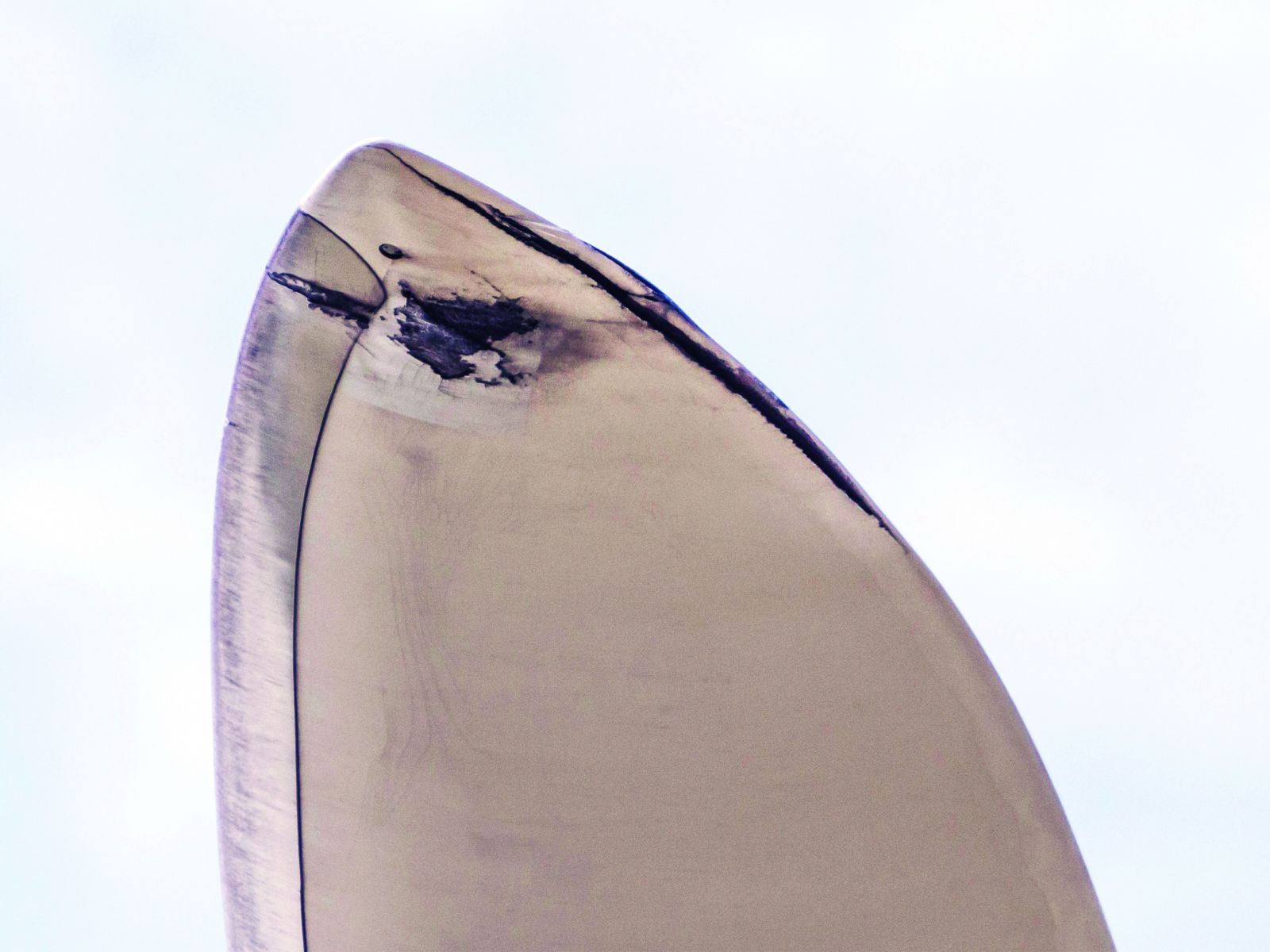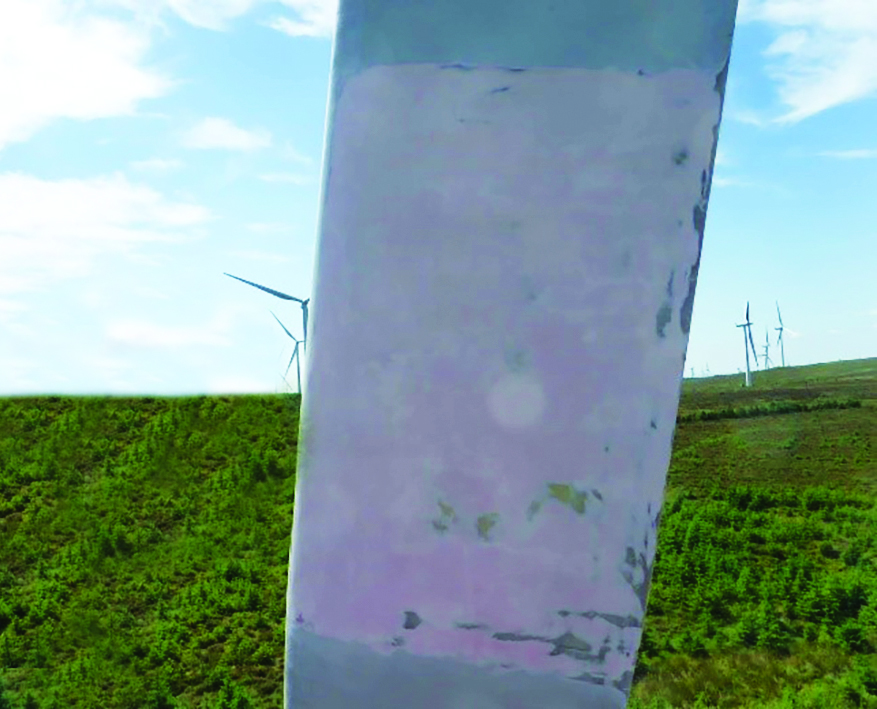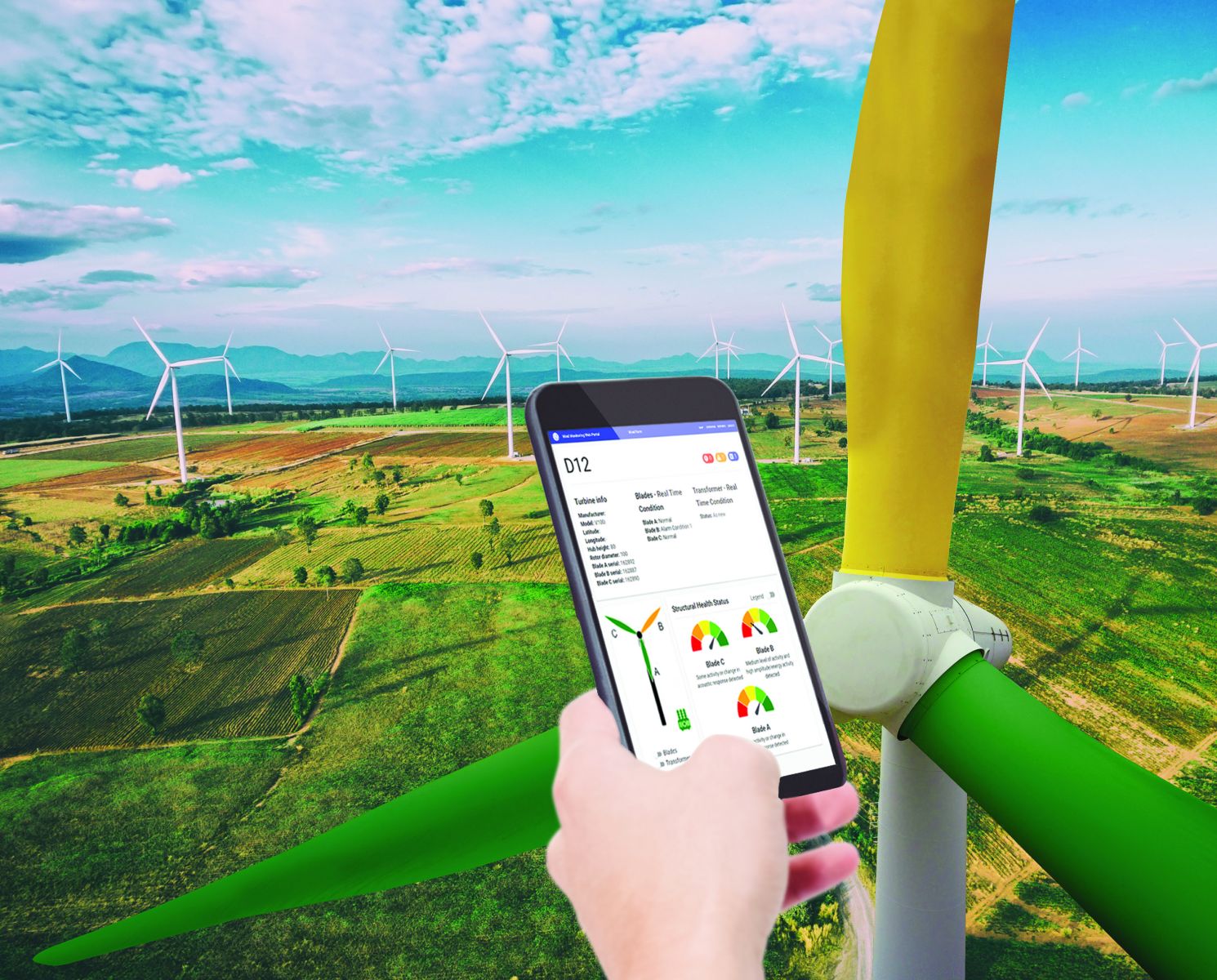On Guard – Remote Blade Monitoring in Extreme Weather
Wind turbines that are used for power generation around the world come with operational challenges, as do all forms of power generation. Extreme weather and a changing climate can pose an exceptional threat to wind energy assets. Turbine blades are continually exposed to harsh winds, precipitation, and more, and must be periodically inspected to identify damages and erosion that can interfere with their operation. Unfortunately, these inspections are often conducted too infrequently to identify damages before they worsen to create more costly and hazardous concerns. Luckily, breakthroughs in remote monitoring technologies allow operators to actively identify and address these issues between inspections and upon onset.

Remote monitoring technology can be used to detect blade damages caused by lightning strikes or other extreme weather events, earlier than traditional inspection methods.
Extreme weather impacts on wind turbine blades
Though wind turbine blades are designed to withstand weather conditions, they are still prone to damage. Lightning strikes, for example, can cause a variety of damages, with the most severe issues resulting in blade failure. Rain, hail, snow, and high winds can also degrade the blades, leading to erosion and decreased performance.
The following blade issues can result from extreme weather events:
- Cracks
Cracked wind turbine blades can be caused by a range of factors, including fatigue, manufacturing defects, lightning strikes, icing, and the effects of high winds. If left undetected, cracks may propagate and lead to complete blade failure.
- Ruptures and perforations
Lightning strikes, variable wind conditions, and fatigue can result in blade perforations or ruptures such as split tips and trailing edges. These defects can allow the elements to affect the interior of the blade, especially during cold temperatures, leading to costly repairs and potential failures.
- Delamination
Delamination may occur on or below the surface of the blade skin due to an impact, lightning, or a defect during the manufacturing process when the blade material fractures into layers. This can occur with object collisions, as well as lightning strikes.
- Bond line failure
Over time, structural fatigue can result in adhesive, cohesive, and substrate failure for bond lines.
- Leading edge erosion
Exposure to rain, hail, dust, ash, humidity, and moisture cause a gradual degradation of the blade's surface. This results in an inefficient aerodynamic profile and loss of production.
Traditional inspection method issues
Since wind turbines are constantly exposed to the elements and an increased number of severe weather events, frequent inspections are a critical part of ensuring their longevity and high-performance. Unfortunately, traditional inspection methods — usually conducted by rope access technicians who perform various non-destructive testing (NDT) methods to find defects — are typically only conducted every six months to three years, allowing time for damages to form and propagate in between inspections. These methods also require turbines to be taken out of service, which lowers a site’s overall generating capacity. While drone-based inspections are efficient, they too have their difficulties.
As a result of these methods and the associated obstacles, many defects go undetected for a long period of time. This results in extensive, costly repairs. Early detection of defects can allow for improved performance, lower repair costs, and the reduction of blade failures.

Identifying damages early enables turbine operators to prioritize inspection, maintenance, and repair activities with more informed decision-making.
Remote monitoring technology
What can be done to maintain the operational efficiency of wind turbines exposed to extreme weather conditions? The digital age has brought about an effective answer. The solution is to supplement traditional inspection methods with remote monitoring technology.
Acoustic Emission (AE) sensors
While some aspects of wind turbine systems can be maintained without human interference, condition monitoring and fault diagnosis play a crucial role. Thanks to advances in monitoring technology, storm damage on blades can be detected before defect propagation occurs. Acoustic Emission (AE) technology uses remote sensors to detect damages at their onset, and alert operators in real time to events, activity, and integrity condition degradation.
The data collected by these sensors can be used to track trends and improve the overall performance of wind turbines. By using data from remote sensors, operators can make more informed decisions about how to operate turbines safely and efficiently.
The use of AE technology has made it possible to track blade damage with increased accuracy, without needing to take the blade out of service. The integrity of each blade is monitored with one AE sensor installed in each of the blade bulkheads, while a data collection system is installed in the hub. When an instance of damage initially occurs on a blade, the sensor hears this change and sends out notifications via a web-based portal.

Through a web-based data portal, operators can access real-time blade integrity data during extreme weather events, so they’re aware of blade issues that require immediate remediation.
The information from these devices continuously flows into an application portal through either cellular or Wi-Fi networks. This provides site managers, fleet engineers, and operations teams with a live status on the turbine blades' condition, as well as historical records for any changes to its condition over time. Access technicians or remote drone operators can be immediately dispatched to further evaluate the damages and, if necessary, perform repairs.
Additional benefits of remote monitoring
- Blade condition data is available in real time to give operators and engineers greater insight into the overall fleet condition.
- Early damage identification allows timely scheduling of maintenance and repair visits before problems worsen.
- Data available through continuous monitoring allows each blade to be ranked and inspections or repairs to be prioritized.
Key Takeaways
Ultimately, the use of remote blade monitoring can help wind turbine operators protect their investment and help to ensure that their turbines are able to generate power reliably, even in the most extreme weather conditions. While remote monitoring isn’t intended to completely replace periodic inspections, it is a valuable tool that provides immediate weather-related damage alerts, notification of active versus stable defects, and prioritization of inspections and repairs. This has the potential to substantially reduce repair and inspection costs while allowing for confidence in operation despite extreme weather conditions.
Alexander Steel is MISTRAS Group Global Wind Energy Center of Excellence Manager.
Sensoria Wind | sensoriawind.com
Author: Alexander Steel
Volume: 2022 May/June









